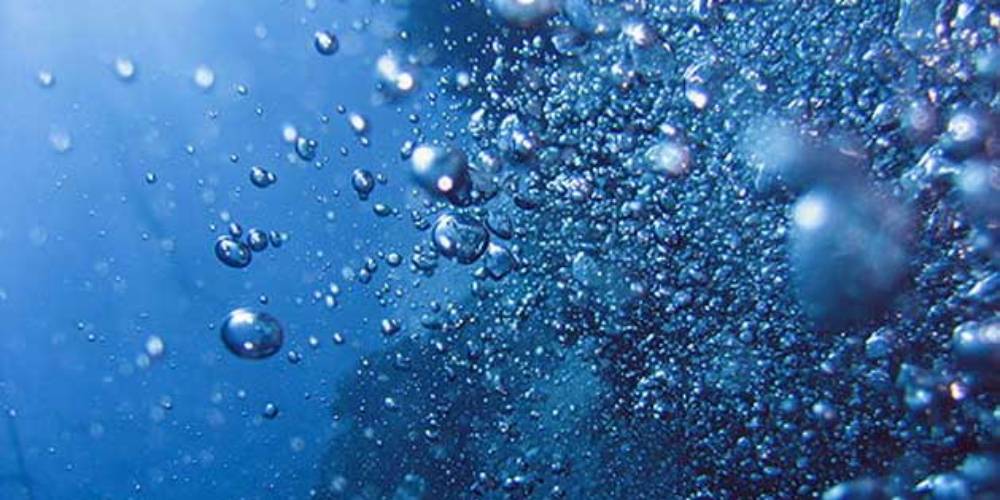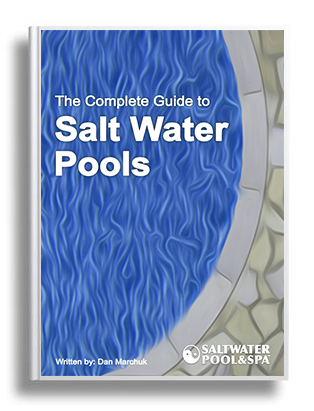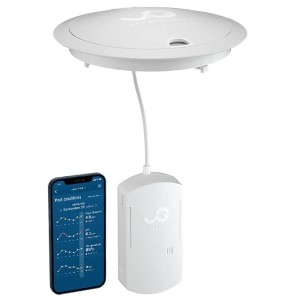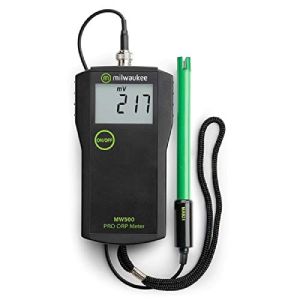- Salt Water Pool and Spa
- Salt Water Pool Systems
- Oxygen Reduction Potential
ORP Oxygen Reduction Potential
ORP or oxygen reduction potential is a term that has been around for years but you probably only heard of it if you worked in the commercial pool or water treatment industry. With the growing popularity of residential smart water care systems it's become a more widely used and reliable testing method in the pool world. What does it really mean and how does it affect you as a pool owner or pool service technician.

In the past you likely tested for chlorine, pH or alkalinity using a form of water test unless of course you hired a pool service professional. With the introduction of smart water care systems the idea was to make the task of testing and balancing easier for the end user without sacrificing accuracy. ORP takes care of both with readings that completely automate the pool water testing process while increasing the accuracy in detecting hypochlorous acid.
The Complete Guide to Salt Water Pool MaintenanceEverything you need to know to maintain your salt water pool and keep it running smoothly all season. |
|
What is ORP?
ORP is a measurement of chlorines ability to oxidize or eliminate contaminants in pool water. It's simply a way to test how capable the chlorine in the water is of eliminating foreign contaminants to keep bathers safe. It's important to note that these readings alone don't give us everything we need to know because chlorine is reliant on other factors like pH, stabilizer, alkalinity and even temperature and sunlight.
The oxygen reduction potential constantly changes with the many variables experienced in swimming pools. It's this reason that there isn't a simple test that residential owner's can carry out. The readings are taken through complex sensors and computer software and are tracked over time along with pH, CYA and temperature in order to provide accurate chemical dosage recommendations for the end user.
The future of chemical monitoring and balancing is now a reality with the latest smart water care monitors that use oxygen reduction potential sensors and state of the art technology to monitor pools 24/7 and relay that information wirelessly. It completely eliminates the need to test and greatly reduces the amount of time and money spent keeping pool water balanced.
WaterGuru Sense Smart Pool Monitoring SystemIf you click on this link and make a purchase, we may earn a commission. |
Measuring ORP
Although you will probably never have to measure or test it yourself, oxygen reduction potential is actually quite simple to understand if we go over a few basics. When chlorine is in a useful oxidizing form it's called free chlorine and will carry a positive charge. Inversely if it is not free and not capable of oxidizing or eliminating harmful bacteria and other contaminants, it won't carry a charge. The charge of chlorine is measured in millivolts or mV and that is what is measured by the sensor.
The range can vary anywhere from -2000mV to +2000mV although extremes are very uncommon. The range normally falls between just below 0 and +1000mV in swimming pools with a minimum of 650mV recommended by the Association of Pool and Spa Professionals or APSP. As the mV's increases you have more chlorine available to oxidize contaminants. If the levels reach 0 or a negative number, you know that there is no free chorine to keep the water sanitized and safe.
Milwaukee 500 Digital ORP MeterDigital ORP meter. If you click on this link and make a purchase, we may earn a commission. |
ORP and Salt Water Systems
If you own a salt water system you already enjoy automated chlorination and the convenience of testing less often and using less chemicals to keep your pool balanced. If you are considering taking your pool into the future with an automated chemical feeder or smart water care monitor you won't be disappointed because ORP sensors will work seamlessly with salt water systems.
What ORP level should my pool be?
What ORP level should my pool be?
The ORP level in a pool should be between 650mV and 750mV. This millivolt level measures a pools ability to oxidize contaminants and is not affected by pH, alkalinity, TDS or other factors.
How do I raise ORP levels in my pool?
How do I raise ORP levels in my pool?
You raise a pools ORP by increasing chlorine output on the chlorine generator or by adding chemical chlorine to the water.
Is ORP affected by water temperature?
Is ORP affected by water temperature?
As the water temperature rises the ORP will rise laterally due to the increase in activity in the water although it's quite minimal at about 10mV increase per 10ºF rise in water temperature.
Disclaimer
Please use all appropriate and proper safety precautions when attempting projects on this website. All projects are attempted at the reader's own risk.
Salt Water Pool and Spa™ participates in the Amazon Services LLC Associates Program, as an Amazon Associate we may earn a commission from qualifying purchases.


